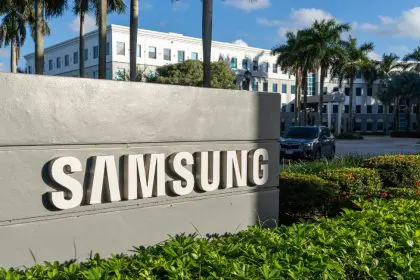Nvidia experienced a revenue boost in the first quarter of the year. The company’s performance exceeded Wall Street expectations, marking another milestone in the ongoing AI revolution that has transformed the semiconductor industry landscape.
The technology giant has confirmed that revenue rose by an eye-watering $44.1 billion in the first quarter of 2025, up 12 percent from the previous quarter and a 69 percent increase from a year ago. This represents one of the most significant quarterly revenue increases in tech industry history, surpassing analyst predictions and demonstrating the massive market demand for AI computing solutions.
“Global demand for NVIDIA’s AI infrastructure is incredibly strong,” Jensen Huang, the founder and CEO of Nvidia, said in a statement. The company’s data center division has become the primary growth driver, reflecting the widespread adoption of artificial intelligence across multiple industries and sectors worldwide.
“AI inference token generation has surged tenfold in just one year, and as AI agents become mainstream, the demand for AI computing will accelerate,” Huang also observed that Nvidia “stands at the center” of a “profound transformation.” The CEO said: “Countries around the world are recognizing AI as essential infrastructure — just like electricity and the internet — and NVIDIA stands at the center of this profound transformation.” This positioning has established Nvidia as a critical player in the global technology ecosystem.
In April, Nvidia stock began to tumble after US President Donald Trump announced a wave of tariffs. The proposed trade policies created uncertainty in the semiconductor market, affecting not only Nvidia but the entire technology sector. However, a US court recently blocked many of President Trump’s tariffs and Nvidia stocks are now on the rise once again. The legal decision has restored investor confidence and demonstrated the resilience of the technology market.
“A very positive result for Nvidia and the tech world after a Twilight Zone tariff battle,” Dan Ives, an industry analyst, told the BBC that Nvidia’s earnings report and the company’s prospects were. The analyst’s commentary reflects broader industry sentiment about Nvidia’s strategic position in the artificial intelligence revolution.
The earnings report highlights Nvidia’s dominance in the AI chip market, where competition continues to intensify among major technology companies. Despite increased competition from rivals, Nvidia maintains its leadership position through continuous innovation and strategic partnerships with cloud service providers and enterprise customers.
Nvidia‘s gaming division also contributed significantly to the overall revenue growth, driven by increased demand for high-performance graphics processing units. The gaming market has evolved beyond traditional applications, with AI-enhanced gaming experiences becoming increasingly popular among consumers and professional gamers alike.
The automotive segment represents another growth area for Nvidia, as the company expands its presence in autonomous driving technology. Major automotive manufacturers have adopted Nvidia’s AI platforms for developing next-generation vehicle systems, including advanced driver assistance and fully autonomous driving capabilities.
Professional visualization has emerged as a key revenue stream, with architects, engineers, and content creators increasingly relying on AI-accelerated workflows. The rise of generative AI tools has created new market opportunities for high-performance computing solutions across creative industries.
Nvidia’s research and development investments continue to drive technological advancement in artificial intelligence, quantum computing, and semiconductor design. The company’s commitment to innovation ensures its competitive advantage in rapidly evolving technology markets.
Manufacturing partnerships with leading semiconductor foundries enable Nvidia to meet growing global demand for AI chips. The company has strategically expanded production capacity through collaborations with industry partners, ensuring supply chain resilience and market responsiveness.
International markets represent a significant portion of Nvidia’s revenue, with strong growth across European and Asian regions. The company’s global presence positions it well to capitalize on worldwide AI adoption trends and emerging market opportunities.
The Omniverse platform has gained substantial traction among enterprise customers, providing collaborative simulation environments for various industries. This software ecosystem complements Nvidia’s hardware offerings and creates additional revenue streams through subscription-based services.
Looking ahead, Nvidia executives remain optimistic about emerging AI applications in robotics, digital twins, and scientific simulation. These new use cases represent significant growth opportunities as AI technology continues to mature and expand into new domains.
The company’s success serves as a bellwether for the broader technology sector, influencing investor sentiment and market trends. Nvidia’s performance often indicates the health of the semiconductor industry and the pace of AI adoption across various sectors.
Industry experts predict that Nvidia’s continued growth will accelerate innovation in AI applications, potentially driving breakthroughs in healthcare, scientific research, and autonomous systems that depend on advanced computing capabilities for optimal performance.
















